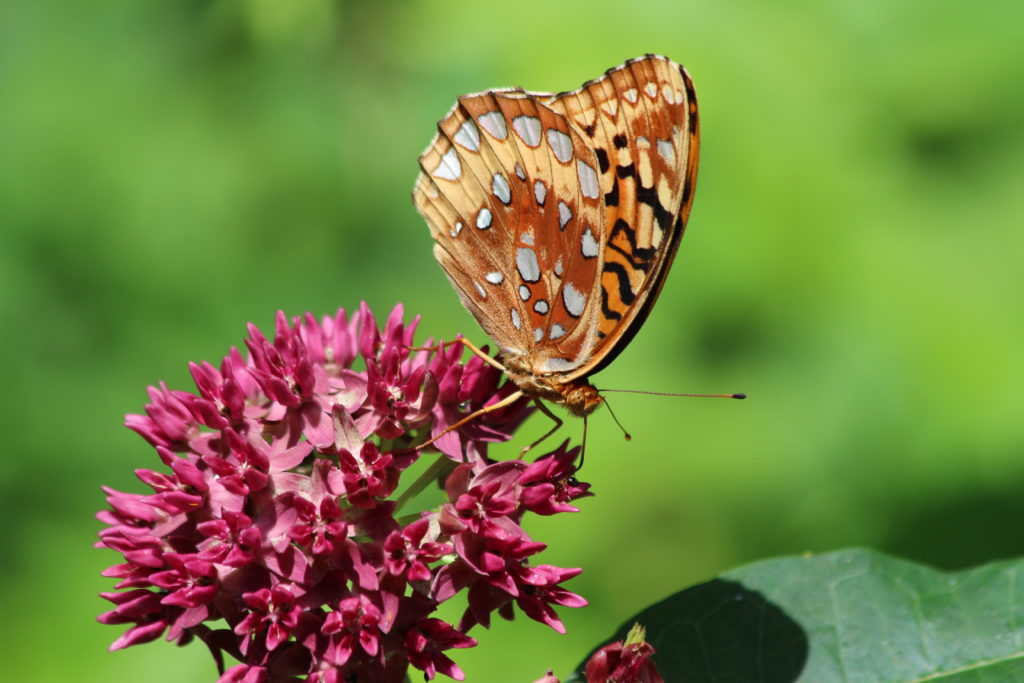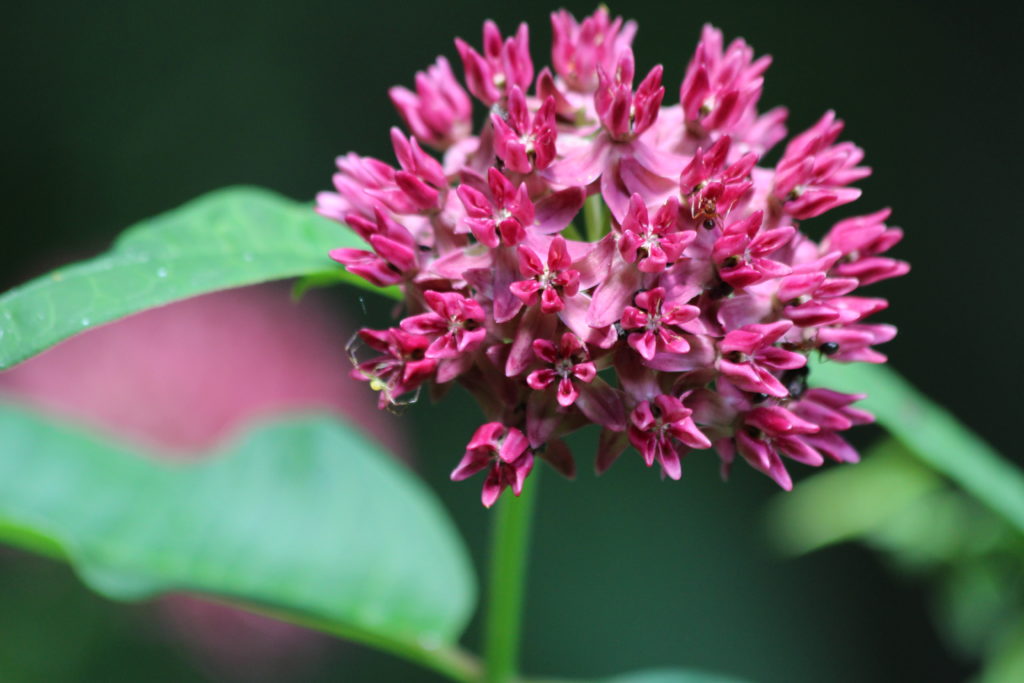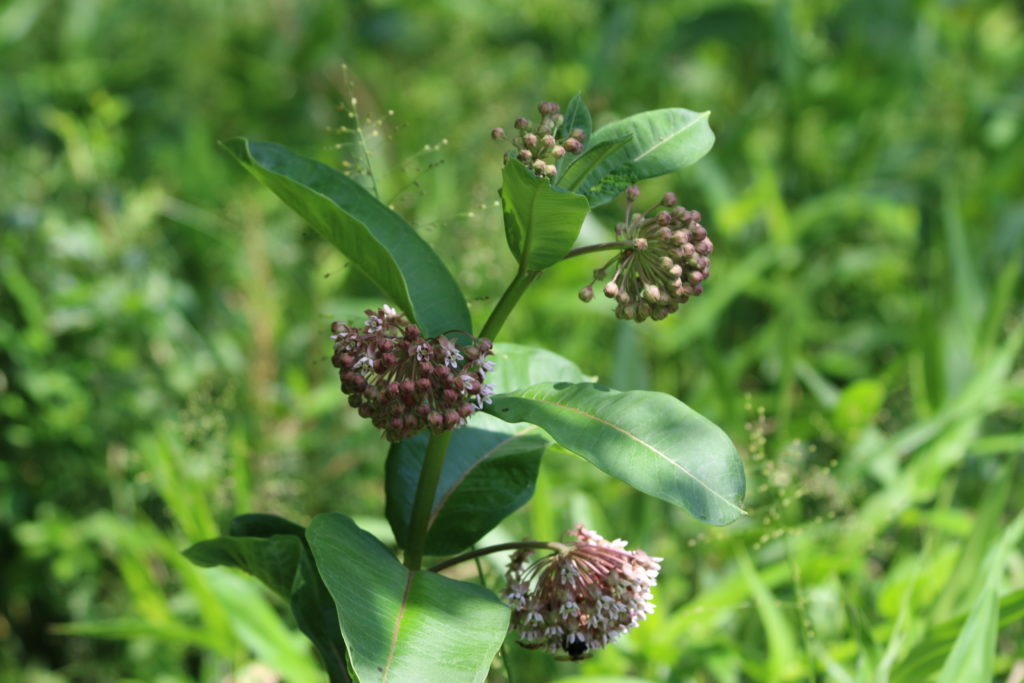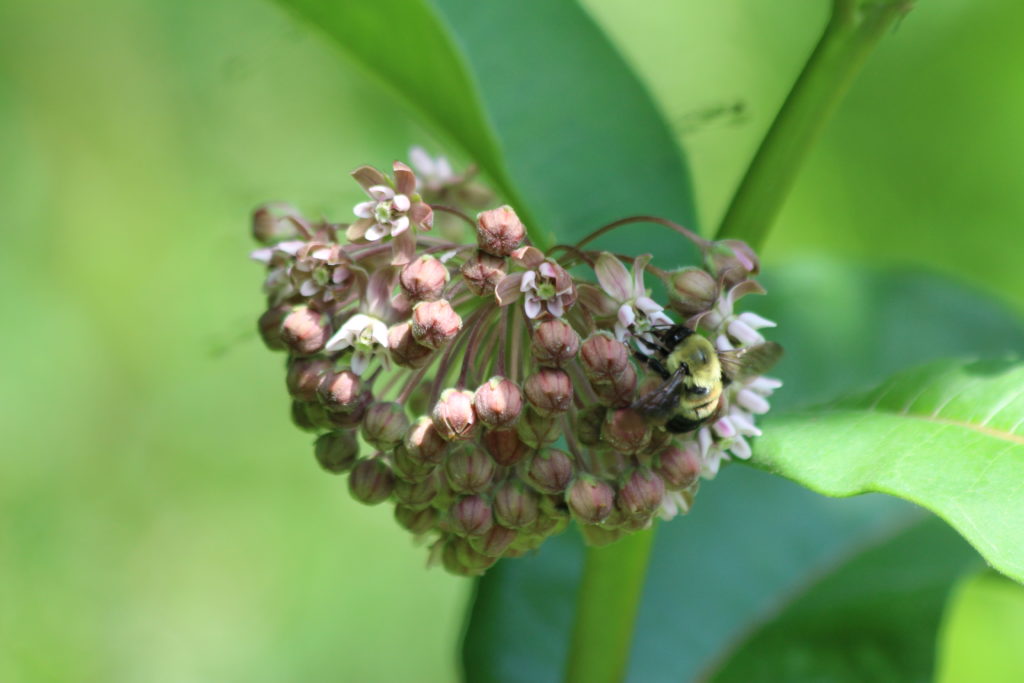
What’s in Bloom | Milkweeds
July 6, 2020
Milkweeds (Asclepias spp.)
Milkweed has become well-known among landowners as an important host plant for the monarch butterfly. Less well-known however is that there are approximately 14 different species of native milkweed found in Virginia. While some are much more common and widespread than others, we will just highlight a couple in this post.
Common Milkweed (Asclepias syriaca L)
Common milkweed is a perennial herb with hairy stems and broad, ovate leaves. It can be found in the Midwest, eastern United States and southern Canada. Common milkweed is generally found in fields, flood plains, forest edges, and can do well in home gardens. It grows between 1 to 6 feet tall and is sometimes considered a weed because (like dogbane – see our previous post to learn about dogbane) it spreads through a root and rhizome system. Broken stems and leaves ooze a milky white sticky sap.
Common milkweed blooms small flowers in large round clusters from May through August. The flowers smell sweet and colors can range from light pink to pink-purple. The fruits are large hairy pods containing many fluffy seeds; they start out green and turn brown as they mature.
Common milk weed can be distinguished from dogbane because it has an often hairy stem that does not branch as much as dogbane, the flowers are pink (dogbane are white) and milkweed flowers develop in larger clusters.
Purple Milkweed (Asclepias purpurascens)
Purple milkweed is a flowering perennial found in most of the eastern United States. It can grow in a variety of habitats such as forests and prairies in full to part sun. It is more rare than common milkweed and is classified as endangered or of special concern in some states. Like other milkweeds, it produces a milky-white toxic sap when broken. It also stores the fluffy seeds in large, spikey seed pods.
The small pinkish-purple flowers grow in large round clusters. Each flower has five petals and horns that droop down toward the stem. The flowers are in full bloom from June to August. This plant can be distinguished from common milkweed because it has a more obvious net veining pattern on the leaves and only grows to about 3 feet tall.
Benefits to Biodiversity | Common and purple milkweed support a myriad of insect species including red milkweed beetles (Tetraopes tetraophthalmus), milkweed tussock moths (Euchaetes egle), monarch butterflies (Danaus plexippus) as well as various pollinating bees, flies and wasps.The flowers also provide nectar to a large variety of bees, butterflies, hummingbirds and other pollinators.
Monarch butterflies (a species in serious decline) are easily recognizable with their striking orange and black pattern. They are specialized to lay their eggs on milkweed and monarch caterpillars will only feed on milkweed. For this reason, preserving milkweed patches or planting where appropriate is a good way to support wild monarch butterflies.
Resources: Flora of Virginia, USDA and NRCS

purple milkweed 
purple milkweed 
common milkweed 
common milkweed